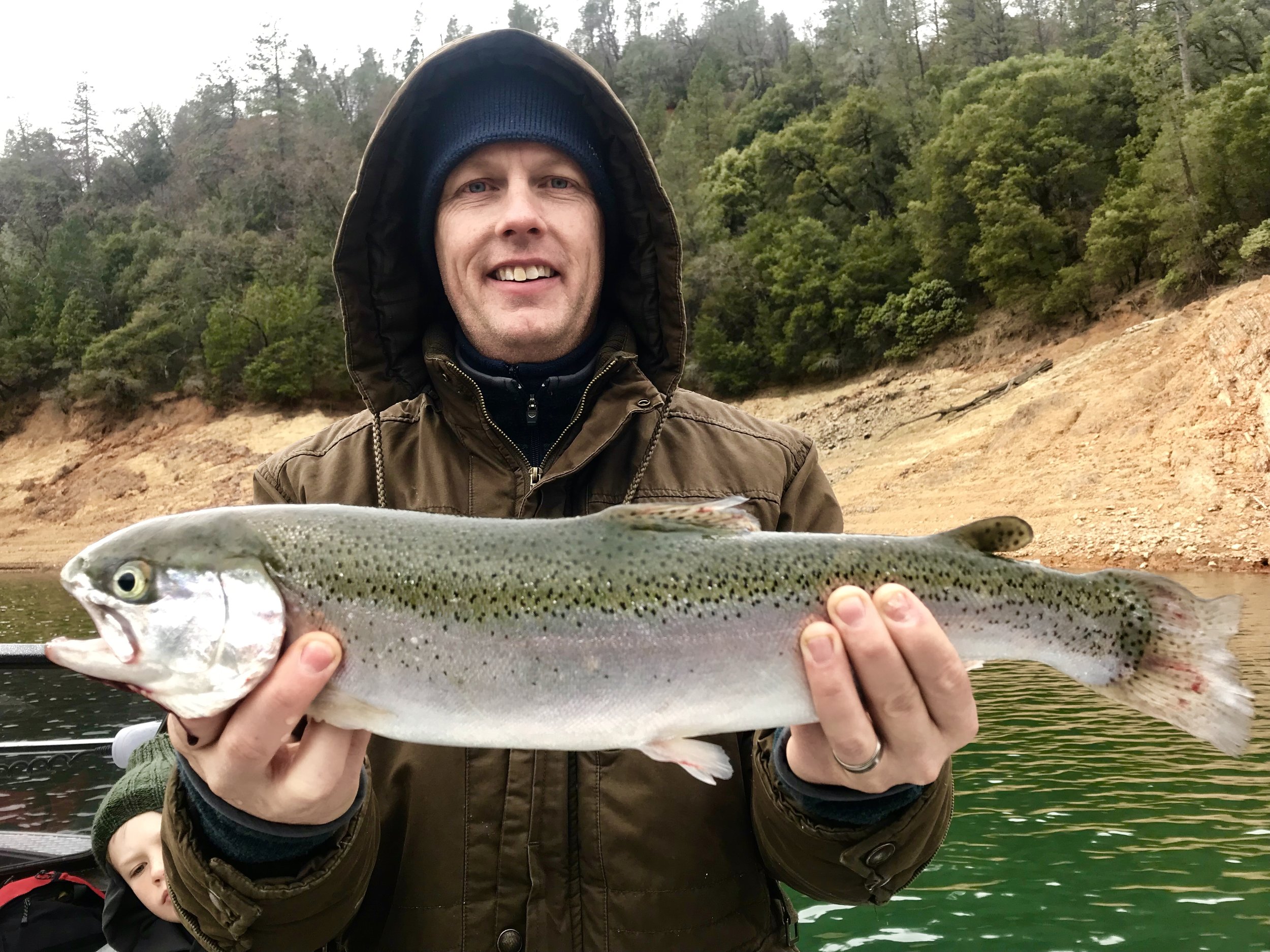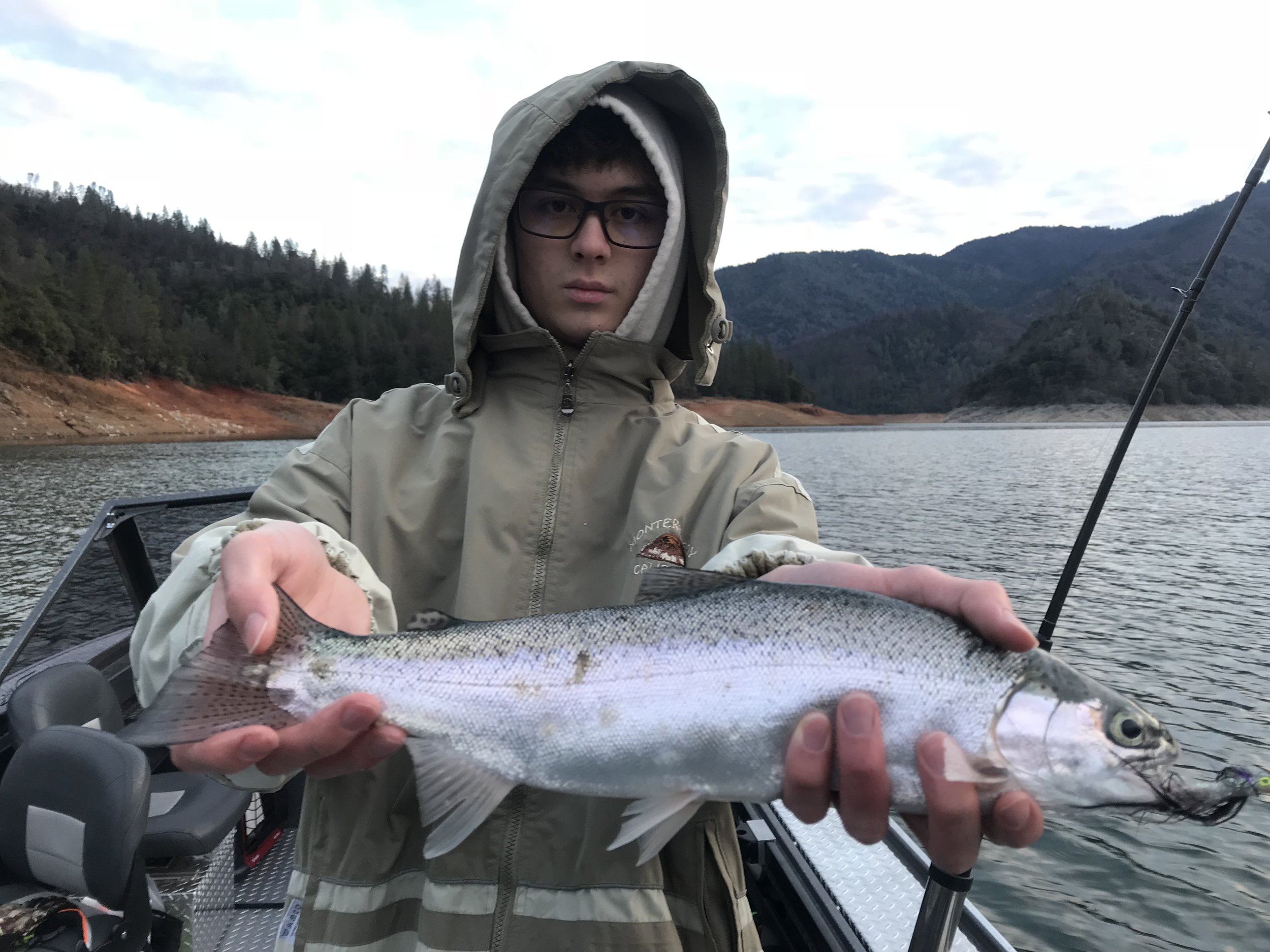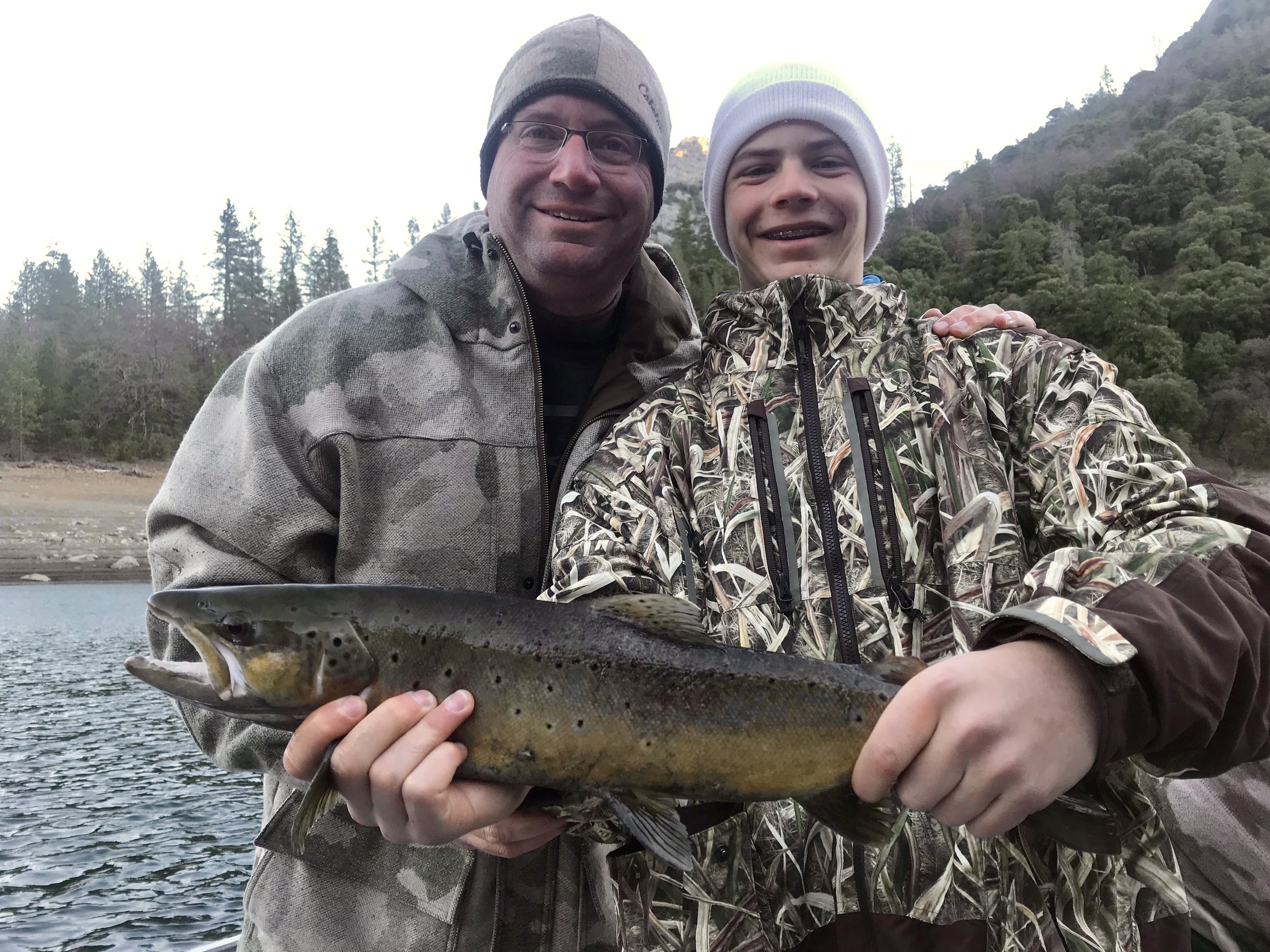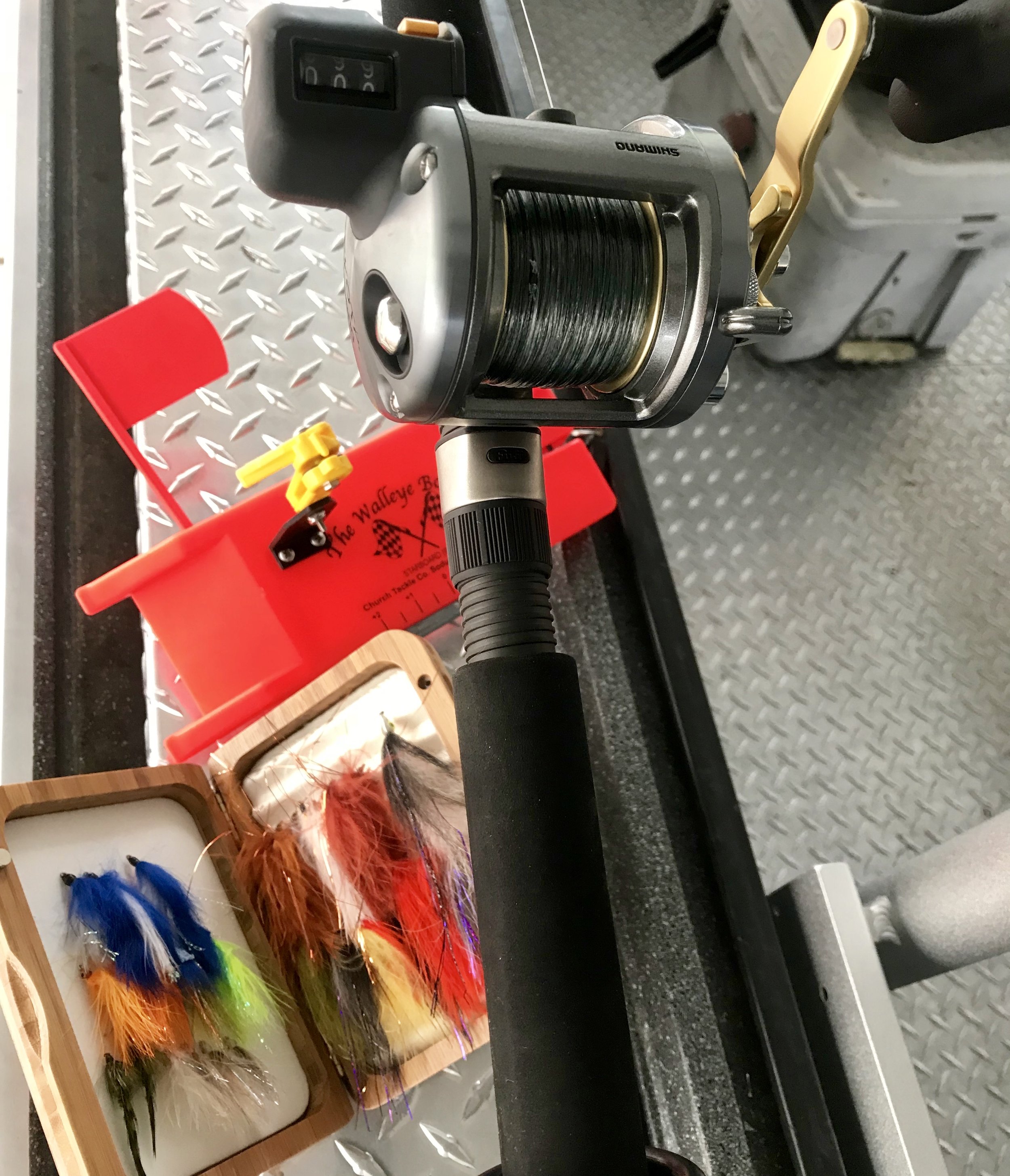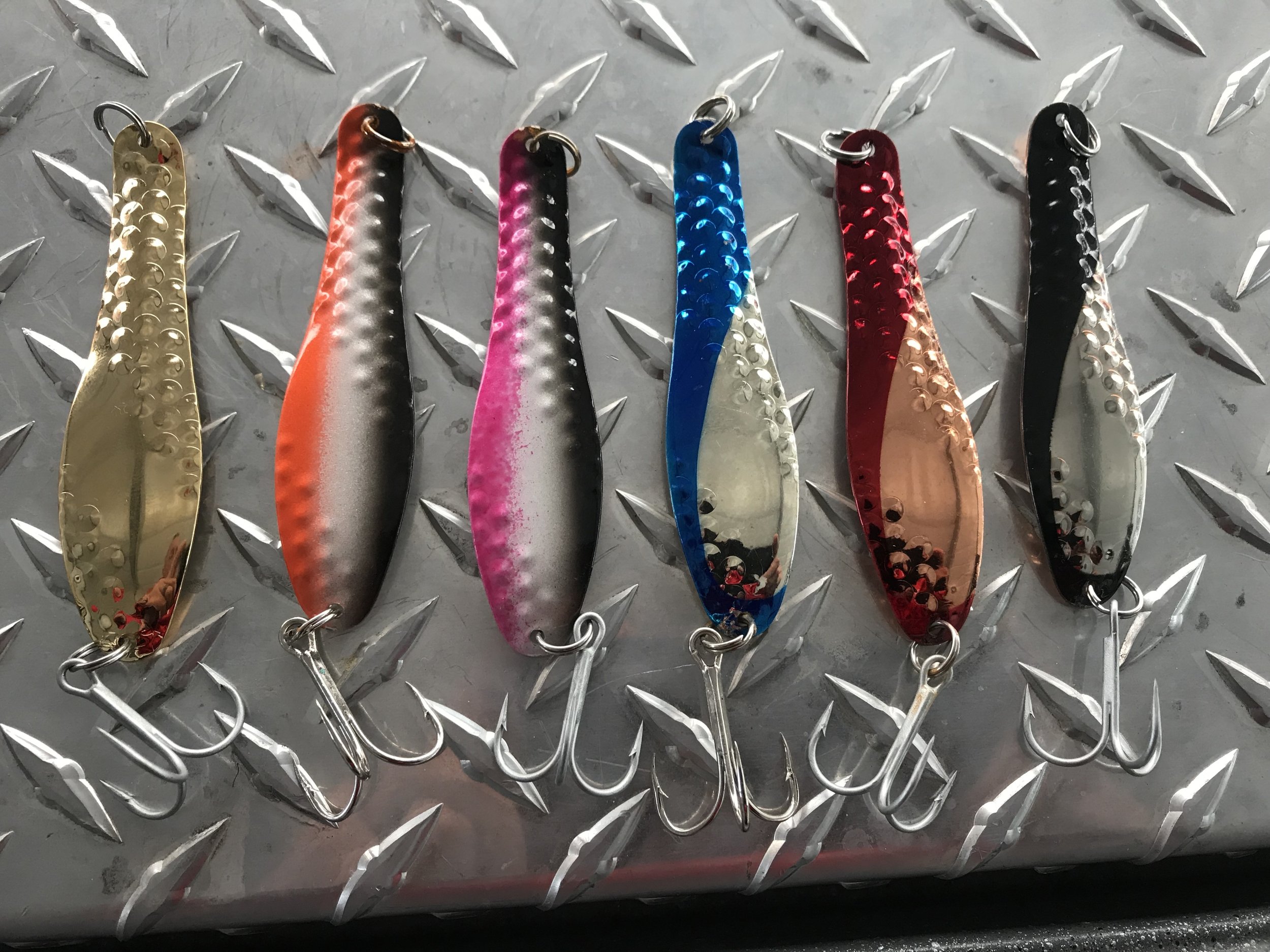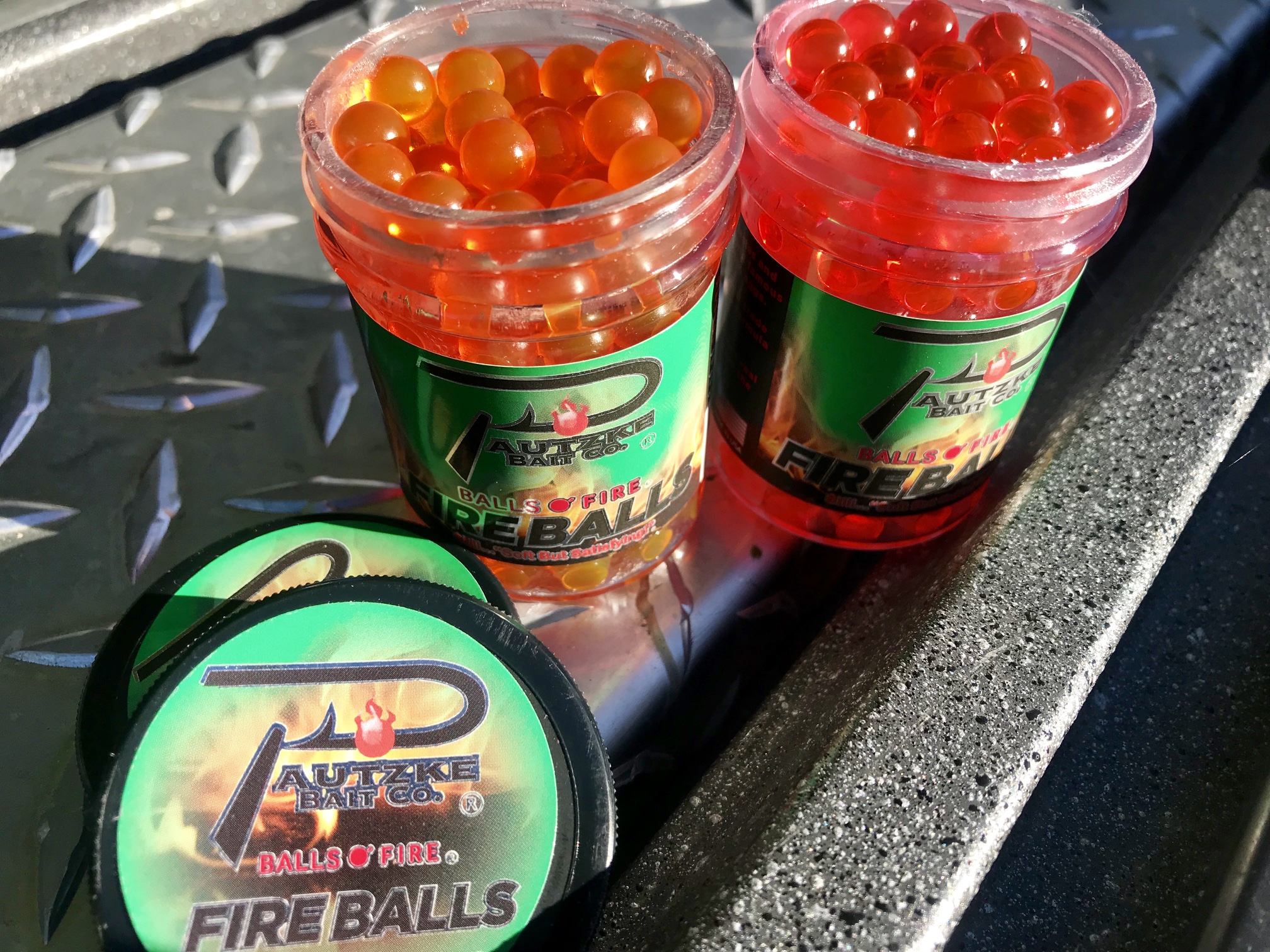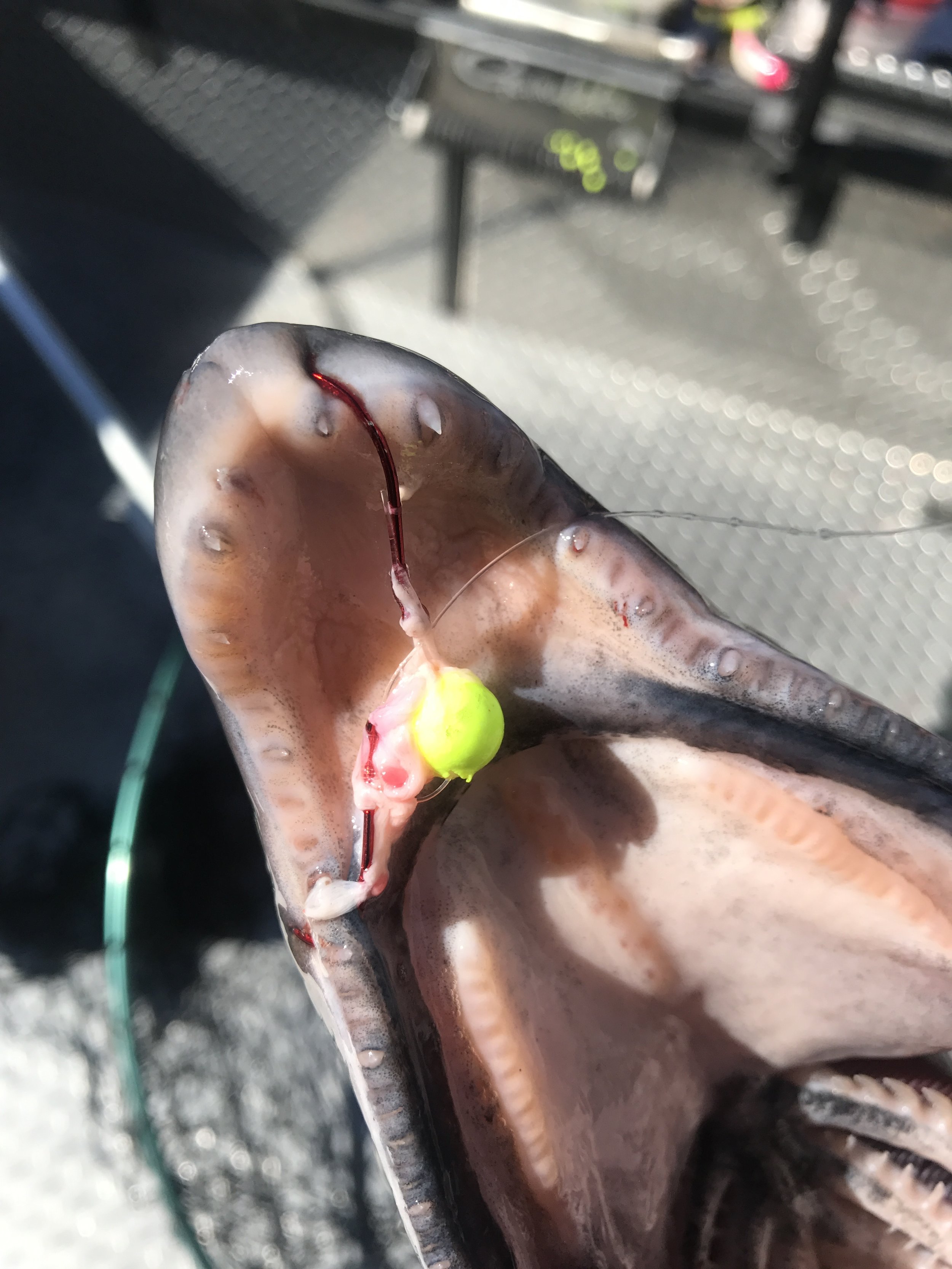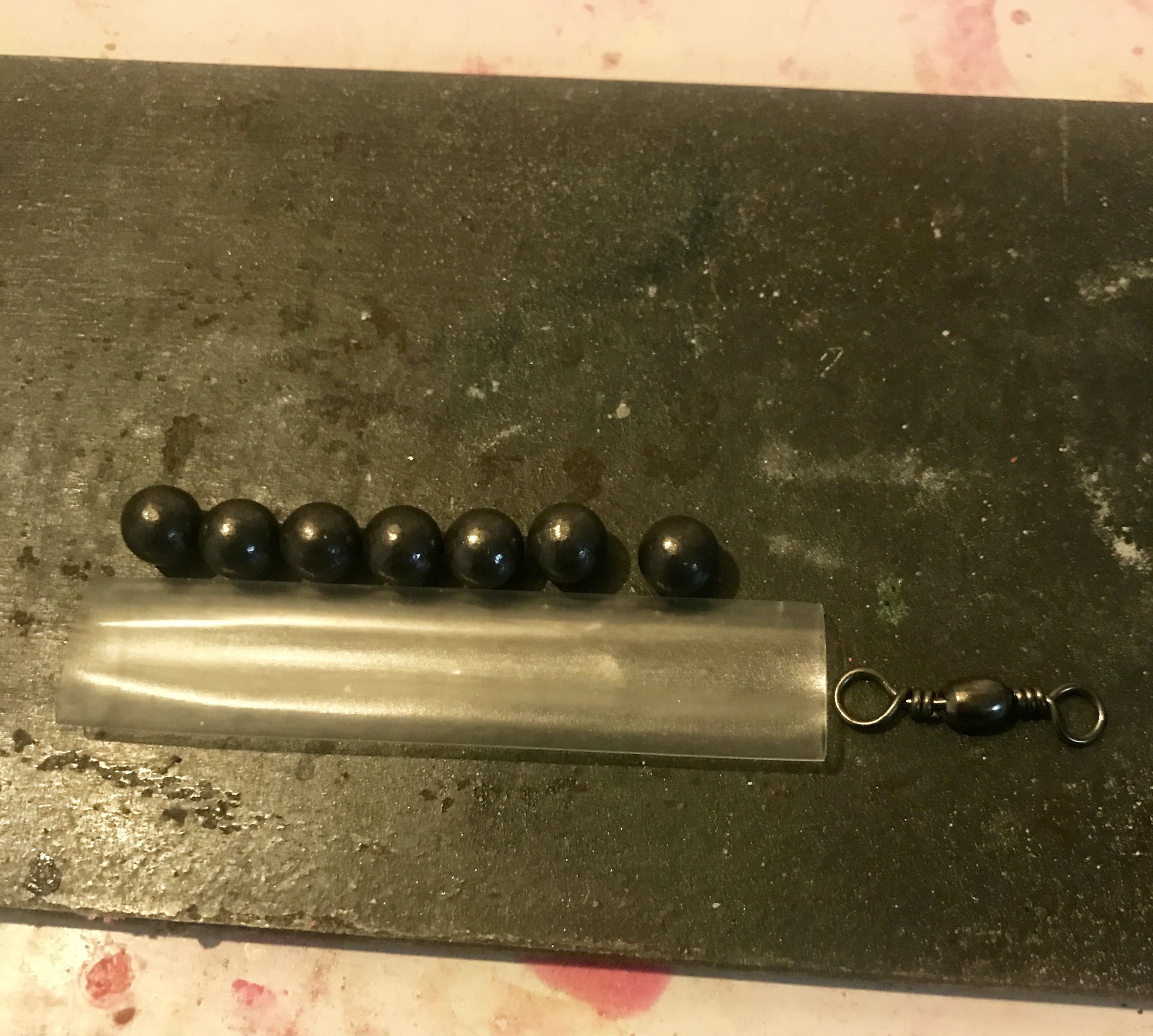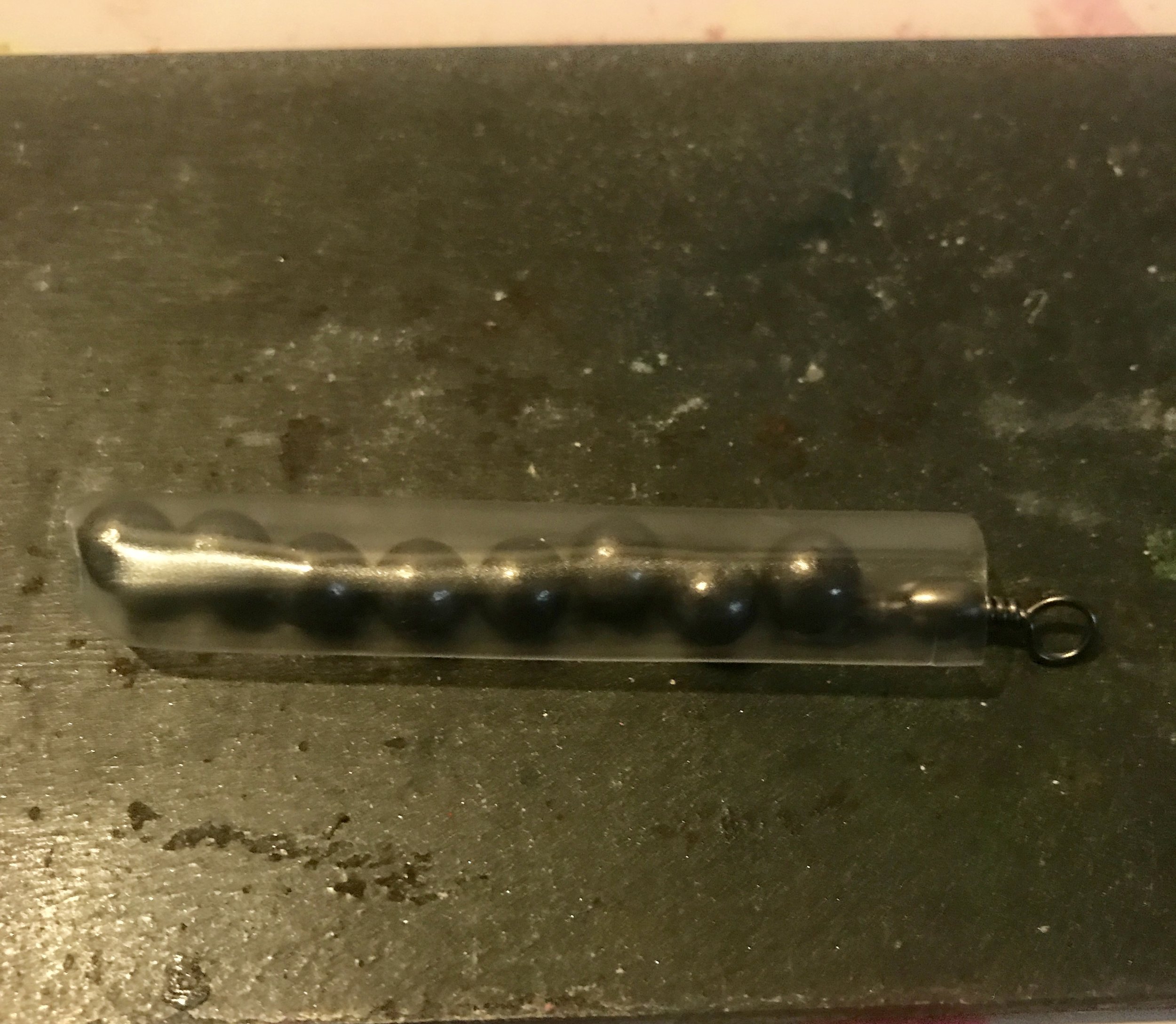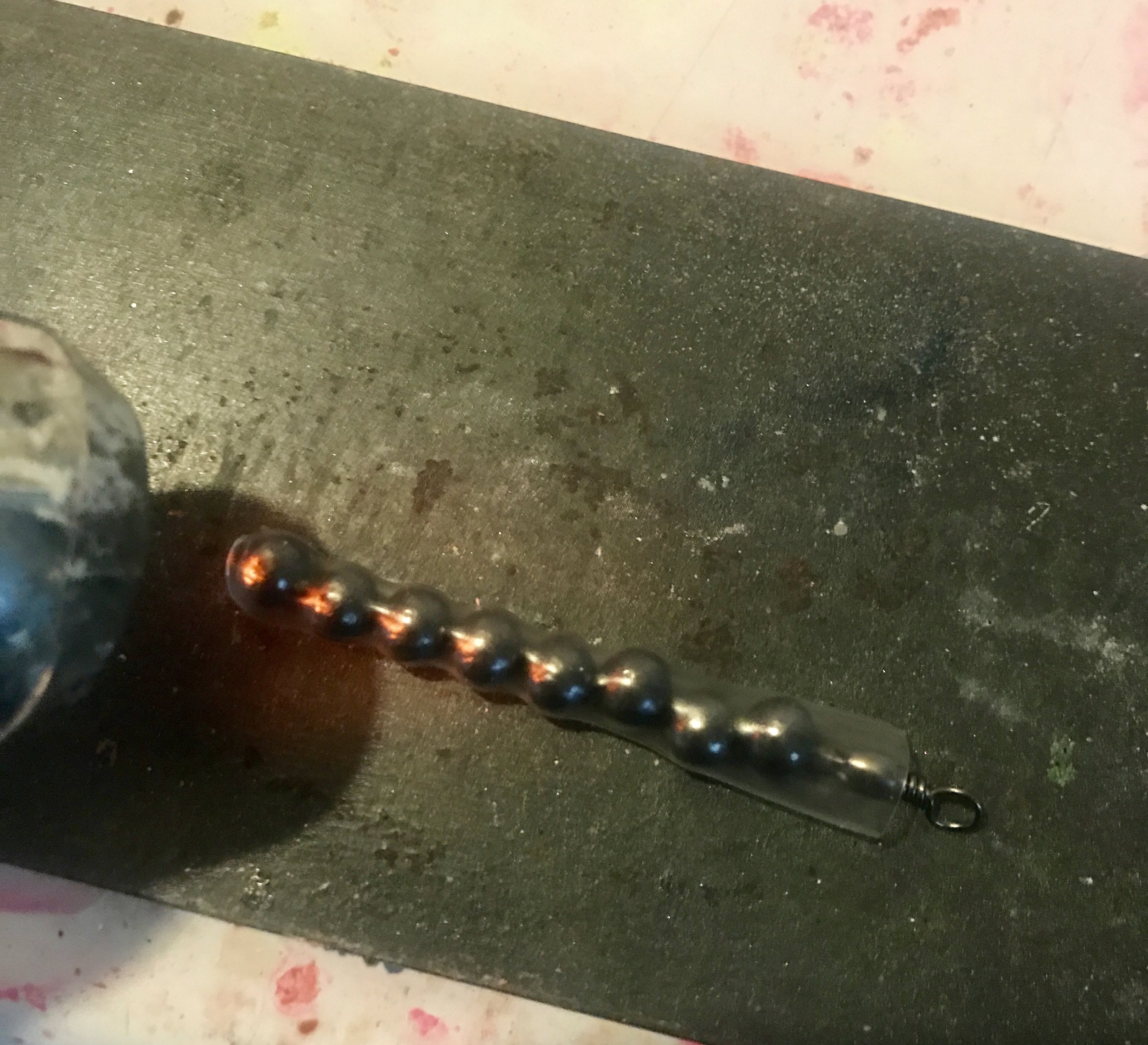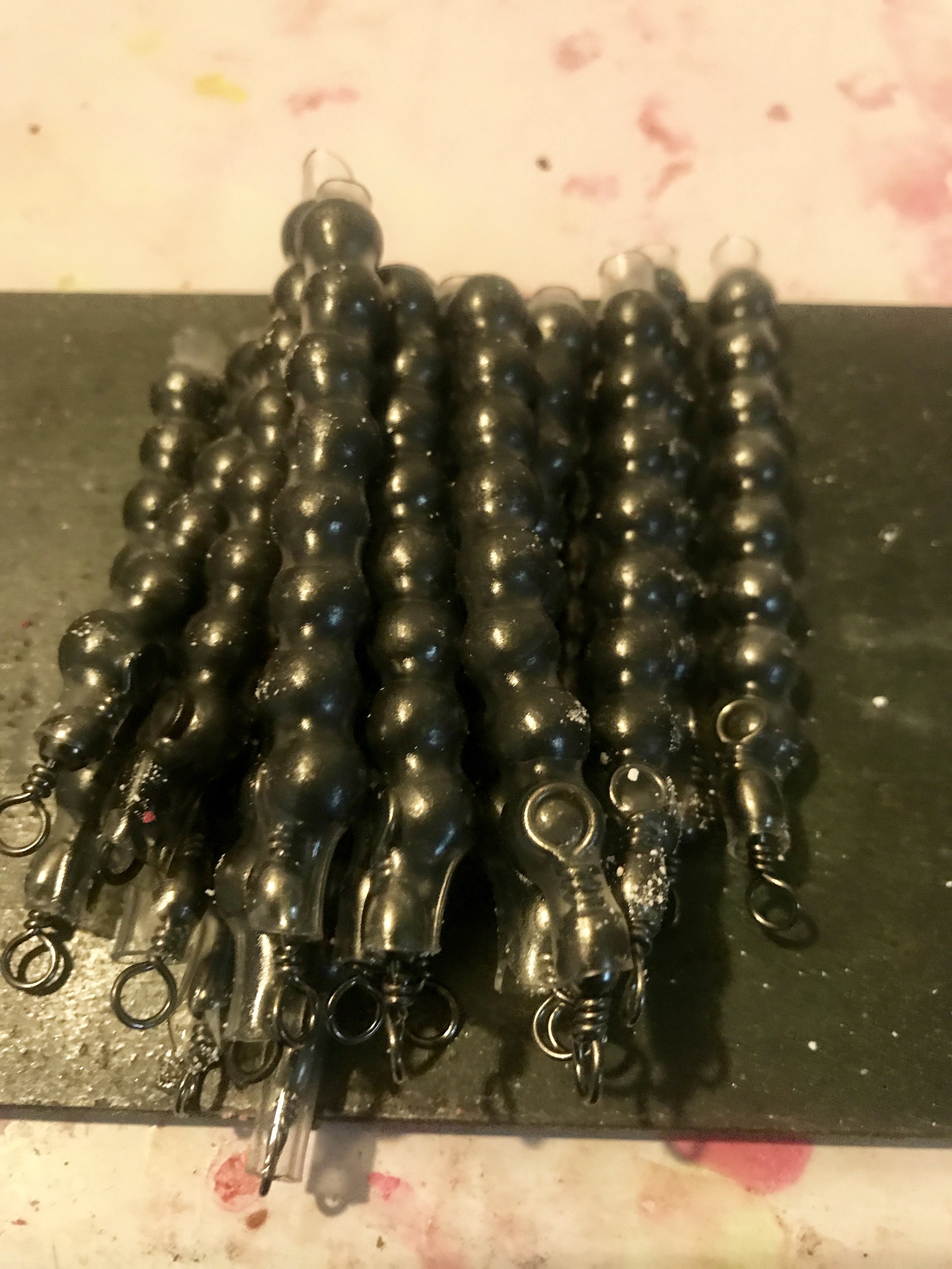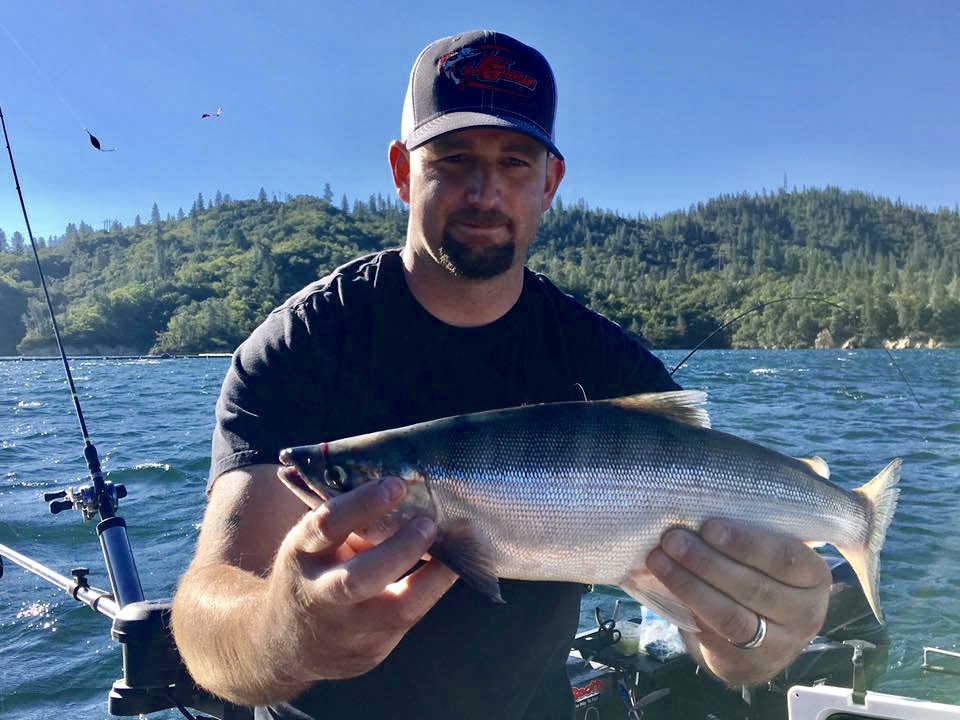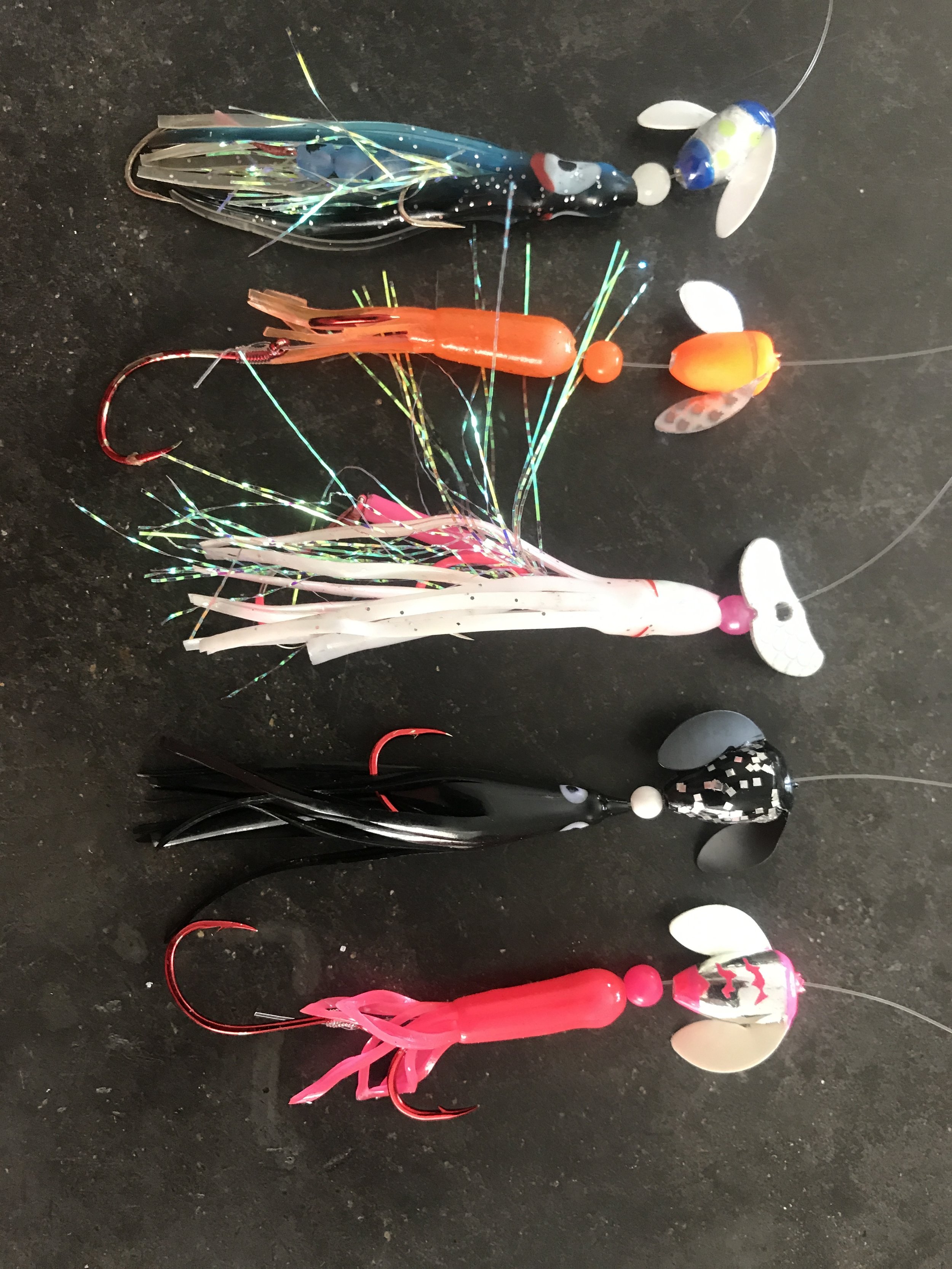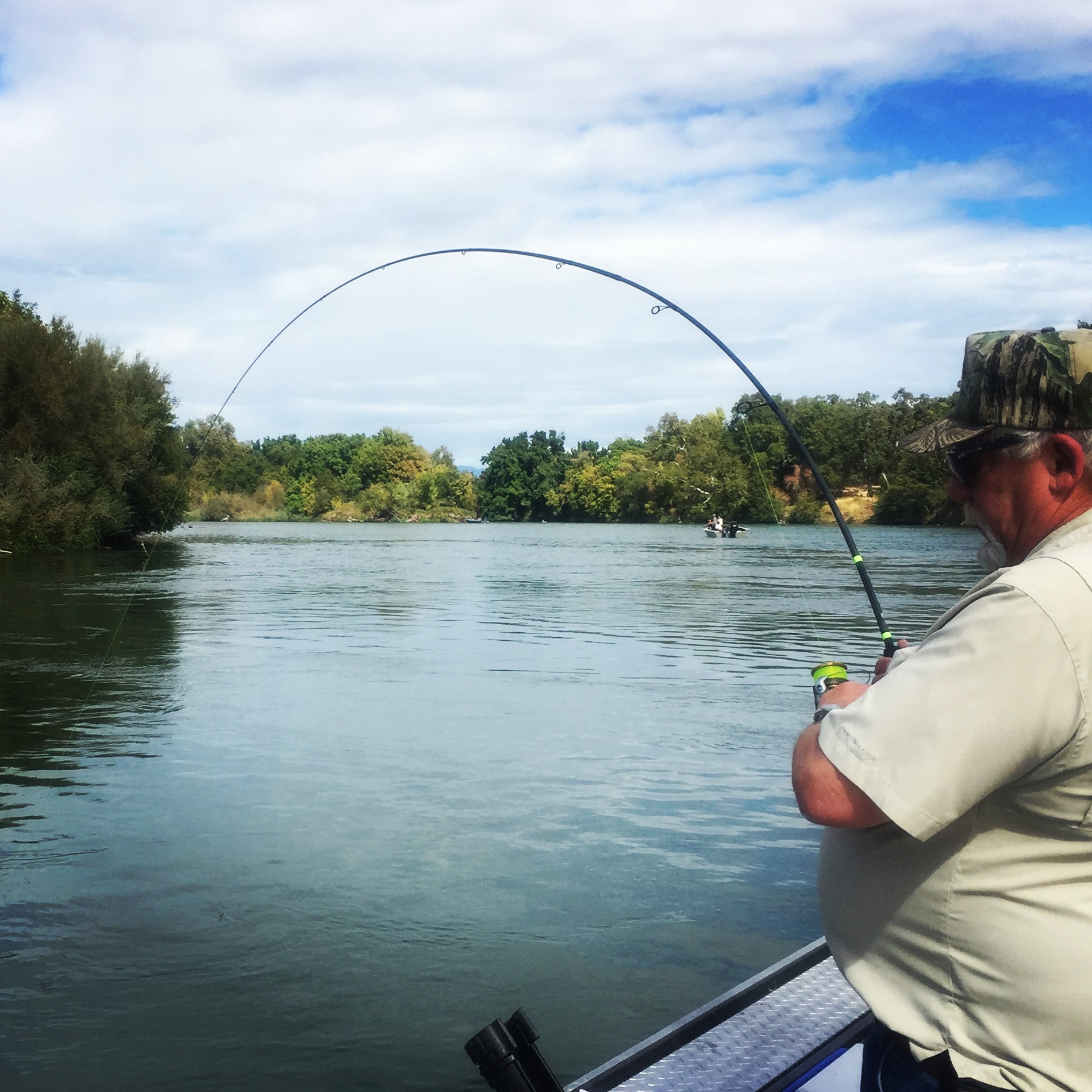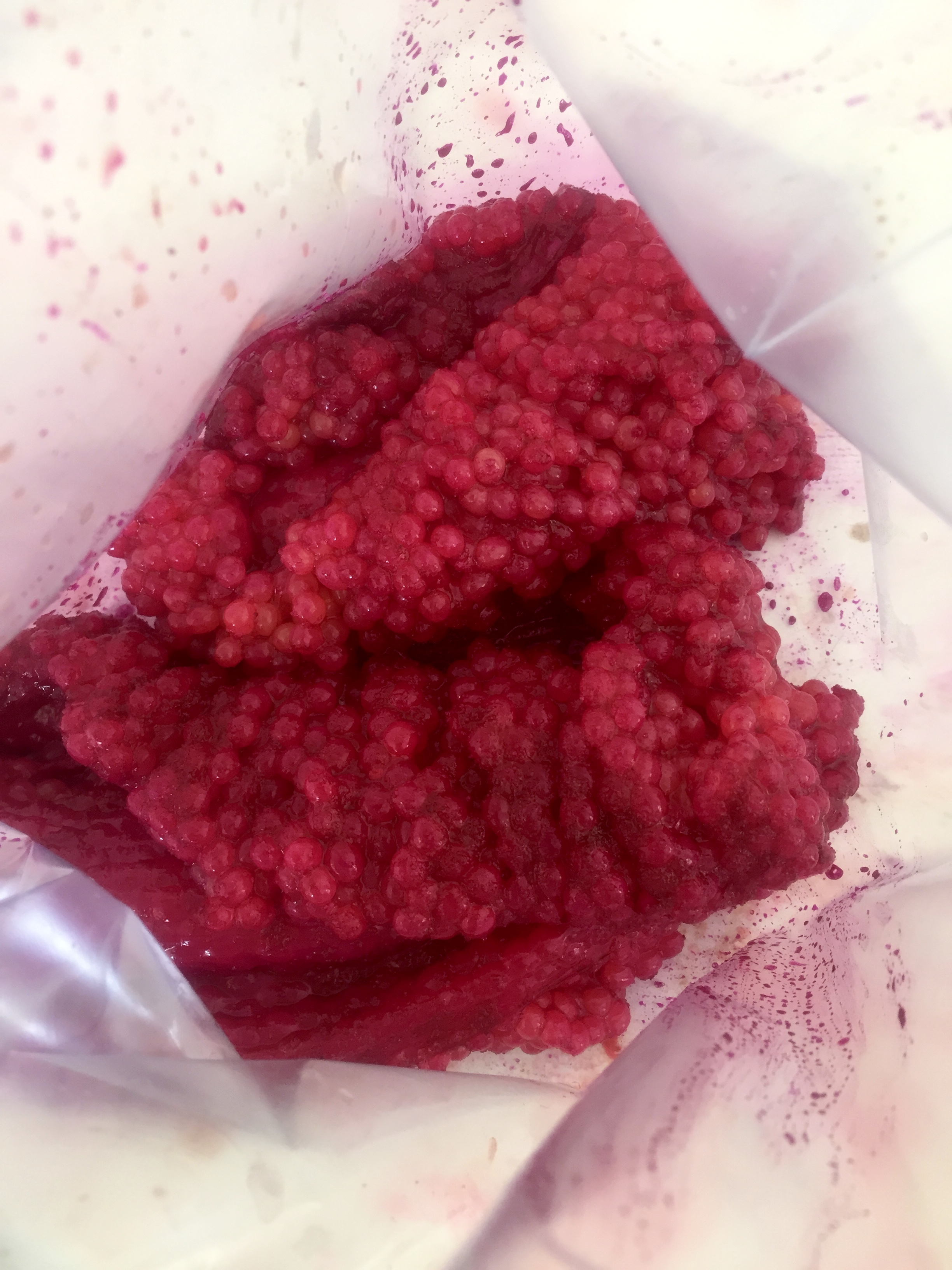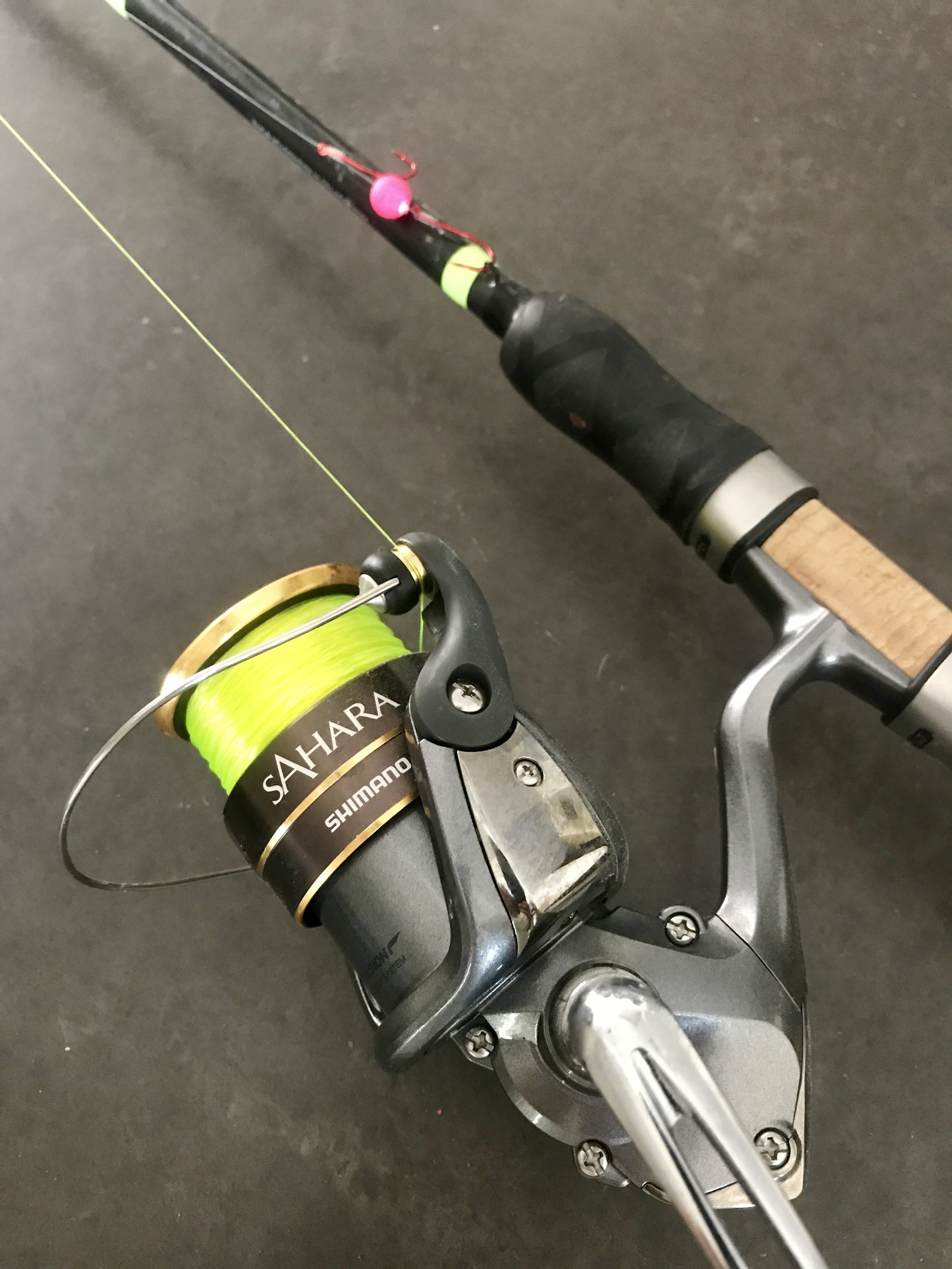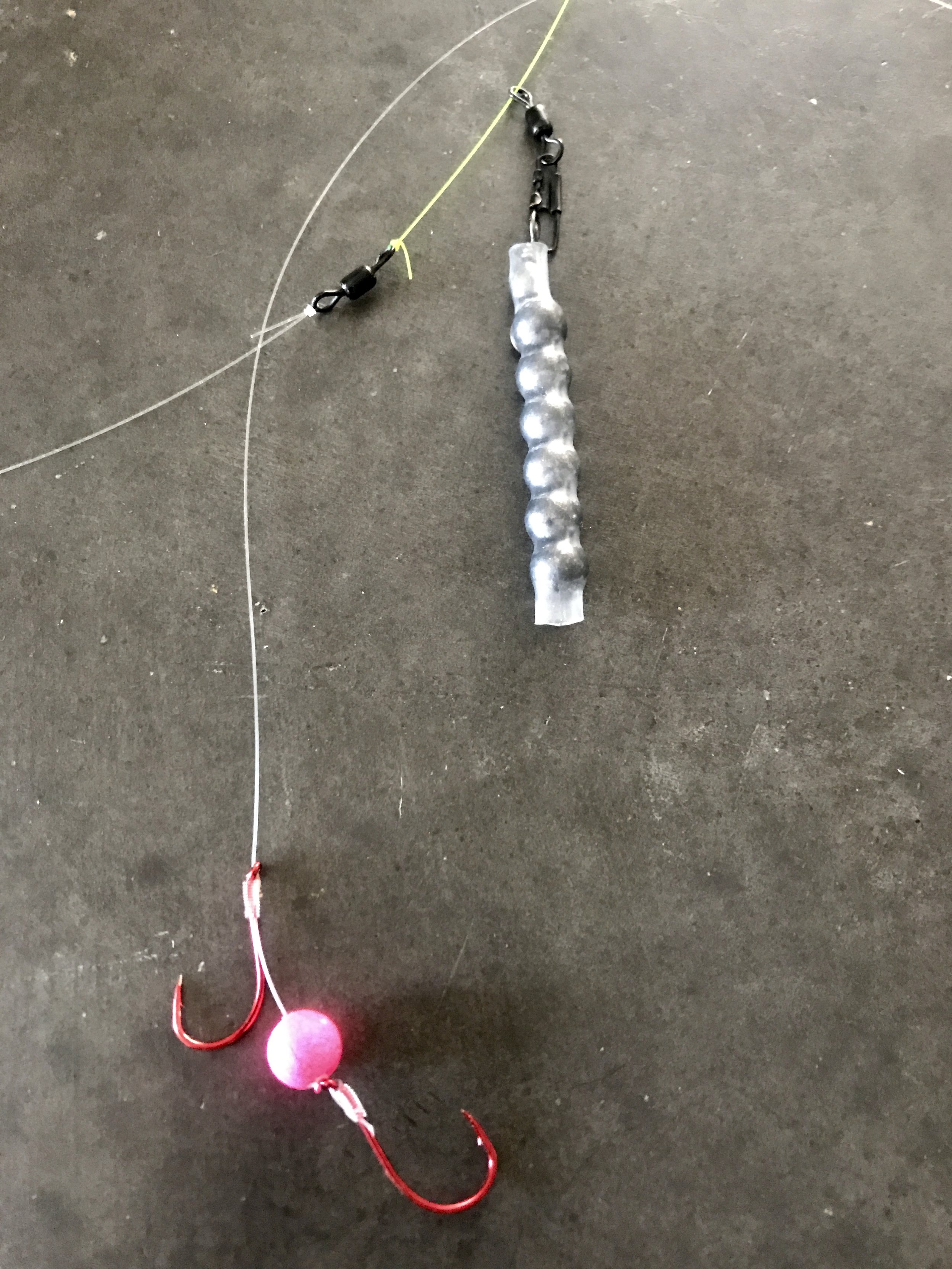There are hundreds of techniques trout anglers utilize to effectively catch trout and there are no limits to the number of combinations and presentations we see people fishing all the time. It can be a bit overwhelming for some of you out there who find a way to spend the time to look for new ways to improve your catch rates when you get those rare days in your busy lives to actually get out and fish. This short article about a technique that can be easily explained in a relatively short period of time and is a very effective method for catching trout on our nor cal lakes.
Learn First hand How To Fish for Shasta Lake trout
This is a Shasta Lake rainbow trout caught on the McCloud arm while trolling an Arctic Fox (shad pattern) Trolling Fly this past December.
Flies and trolling intro.
Trolling flies for trout is actually a very popular and even preferred technique for catching big fish. A local northern California lake that this technique is often used is Eagle Lake and some have perfected this technique specifically on this body of water. Some of the best knowledge and skill sets that have emerged from anglers and charter boat captains who are using this technique effectively can be found on lakes, Pend Oreille and Coeur D'Alene in northern Idaho. Anglers and charter boats on these giant trout producing bodies of water run planer board systems off the sides of their boats on masts or outriggers and trail their fly presentations off the planer board lines with set backs exceeding 100'. The flies are generally in the 4" range and are trolled on the surface where big cold water trout are often found, especially during the winter months.
This planer board system spread is quite similar although its a diagram provided by Trinidad Tackle for running their big fish Optimizer spoons. Same principle though when trolling Arctic Fox flies.
After a limited study of this trolling fly fishery and the 20+ pound trout that are caught using this technique, it just makes sense to take a look at this technique for fishing northern California lakes during the late fall, winter, and early spring. I've wanted to spend a little time on this technique and after acquiring some Arctic Fox Trolling Flies tied specifically for use on Shasta Lake, I found myself introducing them into my trolling spread. This may have been a bold move considering I had clients with me and were depending on me to produce bites for them during their trip. Well, as you can see in the picture above, it turned out to be a good move. It wasn't all luck as some of you might be thinking, as I have used flies to catch trout for many years on many bodies of water. Just never on Shasta Lake and never using the techniques I'm describing now. I'm on a big fish kick these days and have been deploying everything I can confidently show these older weary fish in an attempt to get those big rainbows and browns hooked up for my clients.
Trolling techniques.
As with every fishing presentation or technique, there are numerous ways to get the job done. It depends on many factors and you will have to find what works best for you on the body of water you fish and the type of boat and equipment you have. For purposes of brevity, I will talk about how I fish them in my boat successfully. I have found the most successful presentation method for me is to run the flies behind www.churchtackle.com side planers. This allows me to troll my www.trollingflies.com trolling flies way off to the side of my boat where the boat noise and hull shadow doesn't alarm the fish I'm looking for that are holding off to the sides of my boat in the top 10' of the water column. Trust me when I say it makes a big difference, especially when looking for a bigger class of fish. My side planer rods are towing 30# Power Pro braid line with a 50' PLine fluorocarbon 10-15# lead to the fly. The trout don't seem to be leader shy, so use 10# line or more and be confident you'll still get bites. I like to run the flies 130-'150' behind the side planers and this time of the year, right on the surface at 2.5-3.0 mph.
Fishing with Church Tackle side planers is an absolutely deadly and very effective technique for catching big trout in our northern California lakes. Keeping an open mind of course that these side planers have practical uses in just about every fishery in the country! Visit www.churchtackle.com to see all of what they have to offer in this realm of the fishing world.
If you feel like you need to run them a little deeper when searching for active fish, you can use a clip on weight, or split shot 10'-40' above the fly to get down a little deeper. Lead core or copper lines run behind the side planers can also be used to get the flies down. When going sub surface, "Wiggle Fin" action discs should be used to impart some action on the fly. These discs are quite interesting really and have a lot of information for their use on youtube.com and also on the Arcticfox.com website. I find that slowing my trolling speed helps these presentations fish best. From now on into spring, troll them high and troll them around 3.0 mph and you should entice some nice trout to hammer these flies. PRO TIPS; Make sure you incorporate some turns in your trolling pattern!! Two rules also apply when trolling for big fish; Big fish will eat big baits trolled at higher speeds out of being in a aggressive state. Those same big fish can be enticed by smaller presentations trolling more slowly for less aggressive fish that will take advantage of an easy meal. Plan your day around using those techniques. If you can't find the aggressive fish, give the less aggressive fish something to go after knowing they won't have to expend any real energy for an easy target resulting in a quick meal.
Arctic Fox Trolling Fly in a shad pattern took this average size rainbow on Shasta Lake.
Fly selection and hot patterns for Shasta Lake
There are a bunch of flies to choose from on the Arctic Fox website and I'm sure they all have their time and place to be fished. My favorite colors are the black/white (shad) and the white with purple tinsel (smelt) patterns. Its really a toss up for me as far as one color over another, mainly because I've caught trout on both colors. One thing worth mentioning is making sure your fly is tuned before you let it out behind the boat. Put your fly and line in the water next to the boat at trolling speed and see what the fly is doing. If its swimming upright and not rolling around like a spinning drill bit, you're good. If its spinning, try adjusting the fly material on the shank of the hook until it swims straight. If you're a gear angler and like to fish bait, tip the fly with a worm, but make sure its swimming right. Trout smash the flies that are tipped with bait! Lastly, these flies can be scented, but because the materials will not accept any gel or petroleum based or oil scents. My favorite scent is the Pautzke Bait Co. Liquid Krill scent. Give the flies a try, build your skill and confidence fishing them, and I know you will find that there will be days when the Arctic Fox flies will out fish all of your other presentations.
This Shasta Lake brown was caught trolling an Arctic Fox Trolling tube fly in the white smelt pattern.
The gear.
I use the same gear for trolling flies with Church Tackle side planers as I do when trolling spoons on the surface. I have and use Shimano Telora 7' med/med weight rods with Shimano Tekota 300LC (line counter) reels and spool them with 30# Power Pro braided line. Line counter reels are very helpful in keeping your line setbacks symmetrical and I wouldn't use any other reel for these trolling applications. PLine fluorocarbon 10-15# leader is then attached with a double uni knot to the braid. I like to add a small barrel swivel and a 7' foot 8-10# leader to the fly. The swivel reduces the chances of line twist and I like to tie the leader to the fly directly as it is easier to keep the fly swimming straight and keeps it from spinning. Arctic Fox Trolling Flies including the tube fly versions are the predominant flies you will see in my fly box. I use a rod holder tree and a track system from www.traxstech.com to keep my gear separated and working in the most efficient way possible. I will sometimes run 6 or more rods when trolling flies so keeping the lines separated is critical. Its not necessary to have all of this technique specific equipment, but as a professional, it really helps me keep things in order and my lines in the water where the fish are during my day(s) on the water while guiding.
Just a few of the important pieces of my daily success on the lakes trolling flies.
Please check out the Arctic Fox Trolling Flies website (trollingflies.com) for even more information on the flies Denis Pierce hand ties and sells online. He also sells the Wiggle Fin (action discs) which can be fished sub surface and provide an additional enticing action to the fly while trolling. Feel free to sed me a message with any additional questions. I can get you the answers you need whether its the answer I have or the answer I get form Denis at Arctic Fox. Tight lines and happy fly trolling

